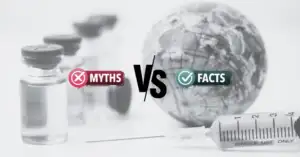The healthcare industry is one of the fastest growing industries in the world with a valuation of approximately 11 trillion US dollars. Pharmaceutical Industry is an important integral part of the healthcare industry with an estimated global market of approximately 1.48 trillion US dollars as per 2022. The United States, EU, Japan, China, Brazil and India are one of the leading countries that are very active and dynamic in the pharmaceutical sector. The US remains the driving force in the growth of the pharma industry. Innovation, research and development are key areas and approximately 20% of the revenue is reinvested for research by big pharma players. The mere size of operations and activities has further classified the pharmaceutical players into various activities. They are classified according to their main focus of activities, magnitude, and business model. Understanding the various categories can help one comprehend their functions and their progression in this dynamic segment.
Following are a couple of currently prevalent types of pharmaceutical companies:
- Pharmaceutical Companies based on research: These types of companies engage in considerable research and development (R&D) activities and are focused on developing novel and innovative pharmaceutical products. These are typical big pharma companies with an established reputation for their growth driven by their own innovative products. Currently, a few newly formed biotech companies are also involved in innovative medicines that are going to boost the growth of the industry. The big pharma companies and the smaller Research based companies together are also involved in mergers and acquisitions to eventually benefit each other. To bring a new medicinal product to the market, these organisations make significant investments in basic research and development, animal and human studies with huge investments in terms of time, costs and human resources.
- Pharmaceutical companies manufacturing generic drugs: These organisations are involved in the manufacture of generic drugs. Their main focus is to manufacture and market generic versions of name-brand medications now that their patents have expired. The original medications’ active components, dose structure, potency, and intended use are all replicated by these businesses. They offer affordable substitutes for brand-name drugs.
- Contract Research Organisations (CROs): CROs are companies that offer services to pharmaceutical companies so they can carry out clinical trials and other research projects. They provide experience in regulatory compliance, data gathering, monitoring, and study design. Pharmaceutical companies and CROs work together to support drug development and testing.
- Contract Manufacturing Organizations (CMOs): Contract manufacturing organisations are experts at producing pharmaceuticals for various other companies. They offer facilities, tools, and knowledge for the manufacture, handling, and delivery of drugs. To cut costs and to maximize efficiency, many pharmaceutical companies frequently contract out manufacture to CMOs.
- Biopharmaceutical Companies: Biopharmaceutical companies concentrate their resources on the creation and development of biologic medicines that are generated from biological organisms or their parts. Vaccines, antibodies, and recombinant proteins are some of these medications. Advanced biotechnology procedures are used by biopharmaceutical businesses, which frequently deal with challenging regulatory restrictions.
- Specialty Pharmaceutical Companies: Drugs that target particular diseases or patient demographics are developed and marketed by specialty pharmaceutical companies. These businesses frequently concentrate on specialised therapeutic niches like oncology, rare diseases, or orphan drugs.
- Giant pharmaceutical companies: These well-known pharmaceutical companies have numerous divisions and a broad product line that includes both prescription and over-the-counter medications for a variety of illnesses. Large pharmaceutical corporations spend more than 20% of their revenue on research and development to find novel compounds and innovative medicines.
- Active ingredient (AI) manufacturers: Manufacturers of active ingredients, commonly referred to as active pharmaceutical ingredient (API) manufacturers, are involved in the creation of the active components or chemicals utilised in pharmaceutical products. These producers supply the necessary ingredients that give the medications their therapeutic effects. Serums, vaccinations, and other items are also produced by them.
In conclusion, there are diverse players with diverse activities in this sector. They are driven by different objectives that serve various purposes and play various roles within the healthcare sector. Thus, this industry has evolved over the years as a dynamic sector and continues to evolve as new business models. The further boost to this segment is driven by the current and potential investors that are funding the growth of this sector.





